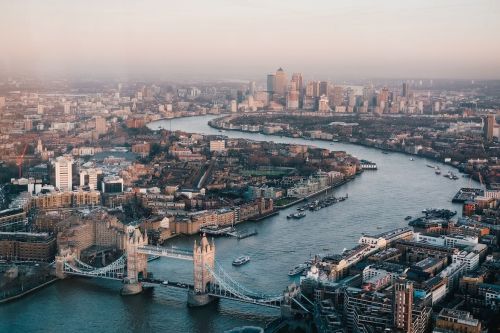Glastonbury - one of the most mysterious places in England. This place attracts people with various interests. Romantics come here because of the legend of King Arthur, pilgrims because of their Christian heritage, mystics to search for the Holy Grail, and astrologers because of the rumors about the zodiac signs formed by nature. You can read what curiosities this place has to offer in our article.
Glastonbury Abbey is a former Benedictine abbey founded in 712 by King Ine of Wessex (one of the seven states of the Anglo-Saxon heptarchy), and Glastonbury Tor is the hill on which the abbey was built.
The festival takes place near the village of Pilton. The first one took place in 1970. During the festival, there are concerts of bands and performers from the broadly understood rock and alternative music genres. In addition, exhibitions, theater and circus performances, dance shows, and more are organized. Over the years, the festival has featured artists such as Lana Del Rey, Amy Winehouse, Coldplay, Bjork, Joe Cocker, Van Morrison, U2, Sinead O'Connor and others.
They concern King Arthur and the Knights of the Round Table, Joseph of Arimathea, and the Holy Grail, as well as pseudoscientific energy lines that, according to their supporters, constitute Glastonbury, Stonehenge, and Avebury.
When the first Christians arrived there, Glastonbury was almost an island surrounded by marshes. The first monks arrived there in 705 and founded an abbey. Only traces of simple cottages have survived from this period, and later, over the centuries, brick buildings were also built, although most of them only left the outlines of their foundations. Only the main church from the 13th and 14th centuries has been better preserved.
Tradition says that this church was built by Joseph of Arimathea.
When getting out of it, he struck the ground with his staff, and the staff miraculously took root, becoming a thorn bush that still blooms during Easter and Christmas in the abbey.
At the foot of Glastonbury Tor, there is an old well in which the waters of the gushing spring make a sound reminiscent of the beating of a human heart. Because the water contains a lot of iron oxides, it is colored red, which is why it is called the Blood Spring. Most often, however, it is referred to as the Well of the Chalice, because, according to tradition, the Holy Grail was hidden there. The Grail was credited with miraculous properties, and after its disappearance, it was searched in vain by the Knights of the Round Table and King Arthur.
Despite the monks' declarations about the discovery of the remains of the king and his wife Guinevere in 1190, there is still no certainty on this matter. Recent research suggests that the king may have been buried near Bridgeen in south Wales. After the last battle of Camlann, which is a difficult place to identify, the dying king was taken to the mysterious island of Avalon.
Henry II shared this news with the prior of the abbey. When the monastery was rebuilt after the fire in 1184, the grave was also searched for. About 2 m underground, a stone slab and a lead cross were found with the inscription: "Here, on the Isle of Avalon, was buried the famous King Arthur." Below this stone slab was found a coffin made of a carved log, containing the bones of a large man with a damaged skull and the bones of a smaller person, identified as Guinevere thanks to a lock of light hair found near the remains.
The original grave remains unmarked and is located 15 m from the southern door of the Chapel of the Virgin Mary.
According to legend, the hill was the entrance to Avon, a hidden kingdom of the underworld. In the 6th century, Saint Kolin visited the hill of Tor, entered through a hidden entrance, and found himself in a magnificent palace. He sprinkled everything with holy water, which caused the palace to disappear.
Lancelot of the Lake was the most famous Knight of the Round Table, a character from Arthurian legend.
There are many shops in the city selling pagan or magical items.
Bounded by the natural contours of rivers, paths, roads, hills, ditches, and embankments, these figures were intended to represent the 12 signs of the zodiac. She wrote the book "Glastonbury, the Star Temple", in which she tried to combine the symbolism of these huge figures with the story of the Grail and the legend of King Arthur. The Glastonbury Zodiac, as old as the hills and rivers that make up its outline, stretches over an area 10 miles across.












